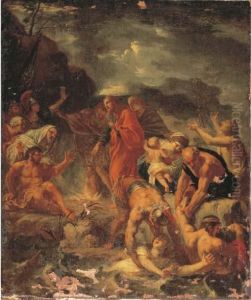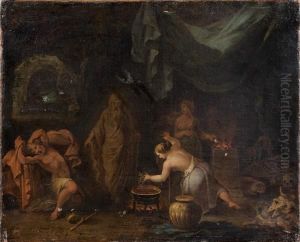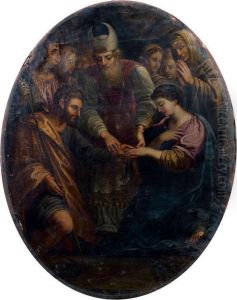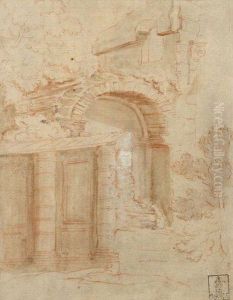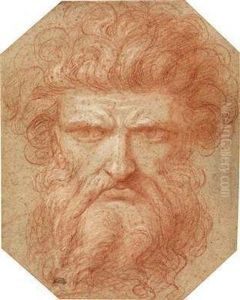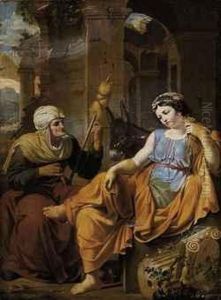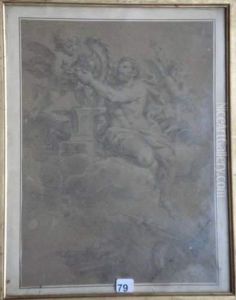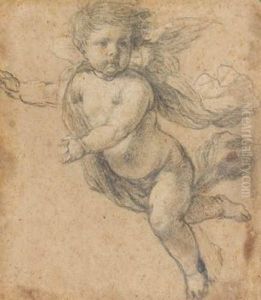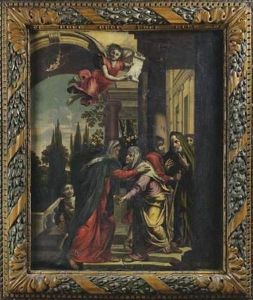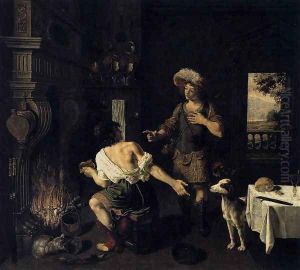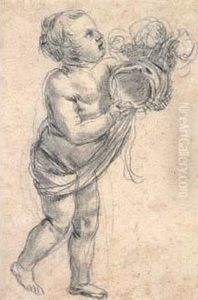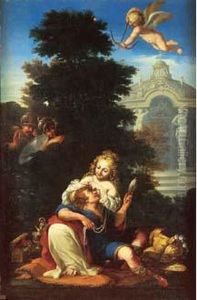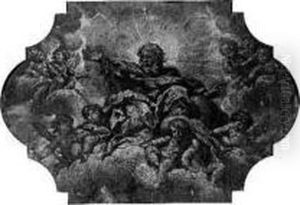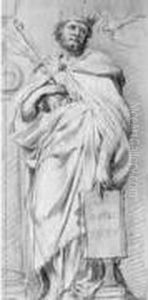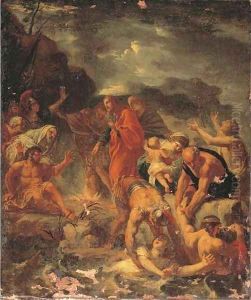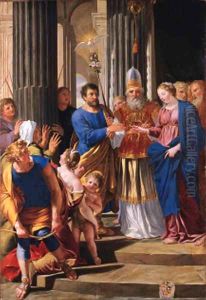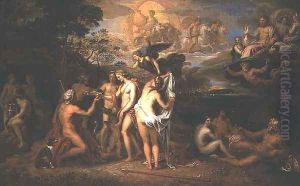Michel I Corneille Paintings
Michel I Corneille, also known as Michel Corneille the Elder, was a distinguished French painter and engraver born in 1601 in Orléans, France. His artistic inclination was evident from a young age, and he came from a family with strong artistic ties—his brother Jean Corneille was also a painter, and his sons Michel II and Jean-Baptiste Corneille continued the family tradition.
Corneille moved to Paris where he trained under the influential French painter Simon Vouet. Vouet's classical baroque style had a profound impact on young Corneille. He became well-versed in the grand manner of painting, characterized by its emphasis on idealization and grandeur. This training period was crucial as it helped shape Corneille's distinctive style that combined both the academic rigor of his time with a certain expressive freedom.
After completing his training, Corneille gained membership to the prestigious Académie Royale de Peinture et de Sculpture in 1648, an institution that played a pivotal role in the development of French art during the reign of Louis XIV. His association with the Académie not only signified recognition of his talent but also provided him opportunities to work on important commissions.
Throughout his career, Michel I Corneille painted a number of religious works for churches, as well as mythological and historical scenes. His works are known for their dynamic compositions, skillful use of chiaroscuro, and the emotional intensity of the figures depicted. Corneille's paintings reflect the transition from the early baroque style towards a more classical approach to art, which would dominate the mid-17th century in France.
Michel I Corneille passed away in 1664. While perhaps not as famous as some of his contemporaries, his contribution to French art is significant. His works can be found in various museums and collections, and his legacy is carried on through the works of his sons who also became noted artists in their own right.
